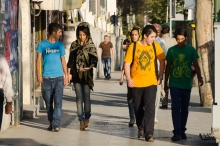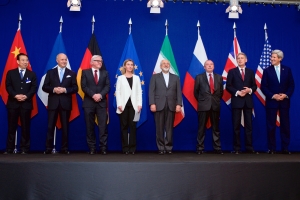
America and Iran: Following Up with Public Diplomacy
Reprinted from the CPD Blog by Philip Seib (Apr 7, 2015)
Whatever the merits of the Iran nuclear agreement, the negotiating process has pushed open the long-closed door to Iran, even if just a crack. If Iran is to gradually reenter the mainstream of international politics, the driving force will be the Iranian people, who are eager to open that door even farther. The ayatollahs might relish isolation, but the vast majority of Iranians are young and attuned to global popular culture that thrives outside their borders. They want more than their current life offers.
For years, the United States and other nations have reached out to this population through broadcasting and online venues, but this process should be immediately expanded. Exchange programs – academic and cultural – are effective in breaking down stereotypes, and existing efforts should be accelerated. The Iranian leadership is likely to raise obstacles to this, but the United States should at least make the effort, which would signal Iranians that “the great Satan” might not be so satanic.
In 1979, when the Iranian revolution occurred, more than 50,000 Iranian students were studying in the United States, more than from any other country. Iranian enrollment in U.S. universities dropped dramatically after that, to about 2,000. The numbers have slowly grown, particularly since the 2009 political protests in Iran. As of 2014, according to a study by the Washington Institute for Near East Policy, approximately 8,700 Iranian students are enrolled in U.S. universities, almost all of whom are in graduate programs in engineering and sciences. Their having been here means something beyond the knowledge they acquire in classrooms and laboratories. When they return to Iran, their perceptions of America and Americans will have been shaped by first-hand experience rather than by the demonizing messages from their own government.
Additional bridges toward more stable coexistence could be built by arts institutions. The historical treasures of Iran provide insights into the country’s long and splendid past. This is Persia, after all; one of the great civilizations. The Shah ‘Abbas exhibition at the British Museum in 2009 and the 2013 American tour of the Cyrus Cylinder gave Western audiences a taste of some of the traditions upon which modern Iran is built. If people understand each other’s culture, relations between their countries are less likely to be shaken by animosities rooted in ignorance.
Despite the nuclear agreement, Iran and the United States remain adversaries, and as the wars raging in the Middle East illustrate, Iran’s leaders are enamored of meddling in their neighbors’ affairs. This ensures that tensions between the United States and Iran will not evaporate in the foreseeable future. But the Iranian public – much of which is sophisticated and forward-looking – might have other priorities. Many would welcome the expanded contacts with the United States that public diplomacy could foster. Perhaps the public diplomats at the U.S. State Department and in non-governmental organizations will seize this opportunity and develop comprehensive efforts to take advantage of the slight opening of the door to Iran.
Issue Contents
- Introduction
- A Tale of Two Speeches: American Identity and Diplomacy
- Economic Sanctions as Temper Tantrums
- The U.S.’ Image Among Shia Muslims
- Lessons From the Past: U.S.-Iran Public Diplomacy
- Israel, Public Diplomacy, and the Iran Agreement
- America and Iran: Following Up with Public Diplomacy
- PD News Stories Related to the #IranDeal
Most Read CPD Blogs
-
November 3
-
November 5
-
November 13
-
November 25
-
December 17
Visit CPD's Online Library
Explore CPD's vast online database featuring the latest books, articles, speeches and information on international organizations dedicated to public diplomacy.









Add comment